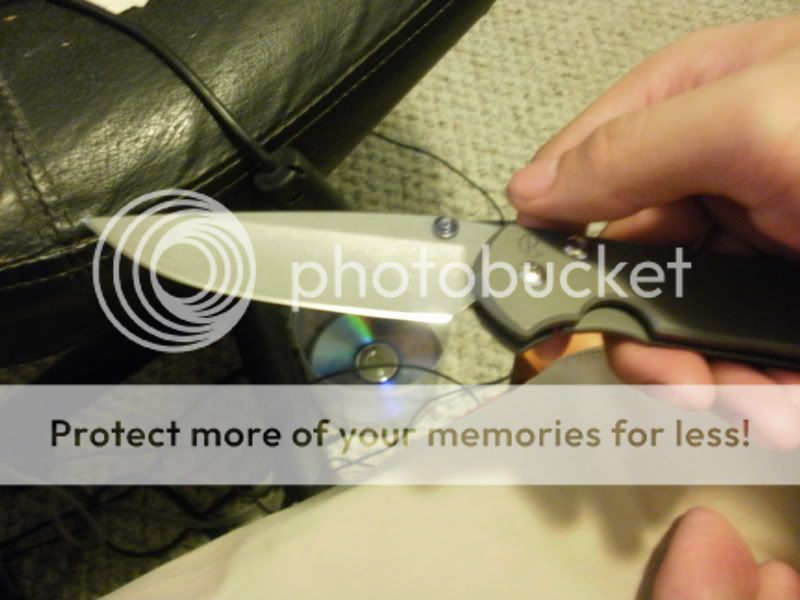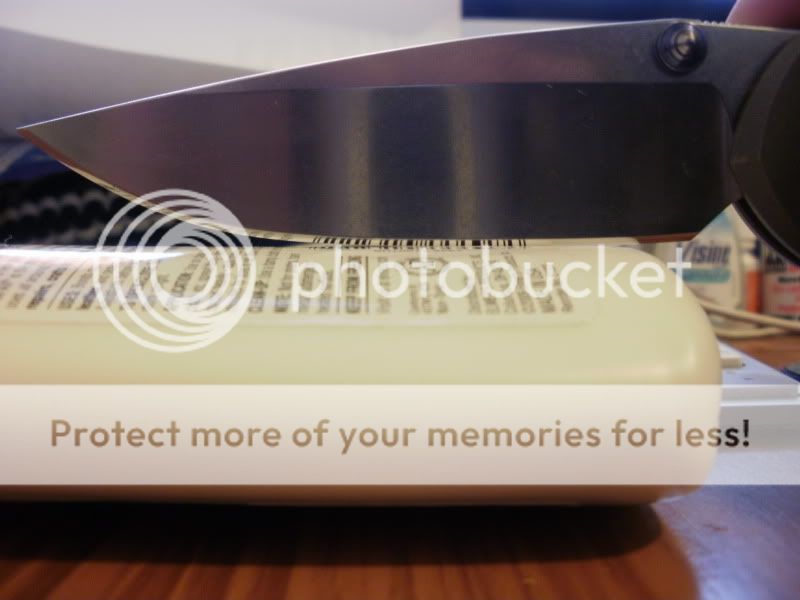- Joined
- Aug 2, 2010
- Messages
- 2,129
As long as the blade is wide enough to reach the belt, blade thickness really isn't an issue. I've done 1/4" thick blades with no issues. For example, my Potbelly is 1/4" thick, but the blade is just at 1.5" wide from spine to edge at the widest point and is able to reach the belt, even in the narrow 20 degree guide. The 25 degree guide would allow a thicker, yet narrower blade to still reach the belt. I can get results as good with the guide as I can without the guide.
I use the guides to do my first sharpening on any blade to make sure the angle is as close to perfect as I can get it, especially if I am doing a serious reprofile of the edge with a coarse belt. Once I have the edge set on a blade, the only time I use the guide is if I have to repair damage to the edge. For touch-ups, I just pop the belt on and freehand it.
Has anyone had any problems with not being able to remove the burr on a blade at the 20 degree angle, with the guide or without it? I've had the problem twice, both on stainless steel blades. Both were large fixed blades, one in semi-custom in 440C and a Ka-bar Next Gen. in 440A. I set the edge at 20 degrees and just absolutely COULD NOT get rid of the wire edge. I tried old belts, new belts, etc. I had a beautifully polished edge but just couldn't drop the burr. I tried cutting cardboard, pulling the edge through wood, stropping on leather, just about everything I know or have read about.
I went to the outdoor guide (25 degree) both times and had ZERO problems working up a burr, removing it, and getting an edge that would push cut newspaper within a couple of minutes.
I've only had this happen with those two stainless steel blades. Both had very obtuse edges on them and I had to do some serious grinding on them. The 440C blade had to have an angle close to 50 degrees per side. The Ka-Bar wasn't quite so bad, maybe 30+ degrees per side but the edge wasn't consistent at all.
Just curious if anyone else has experienced something similar.
I use the guides to do my first sharpening on any blade to make sure the angle is as close to perfect as I can get it, especially if I am doing a serious reprofile of the edge with a coarse belt. Once I have the edge set on a blade, the only time I use the guide is if I have to repair damage to the edge. For touch-ups, I just pop the belt on and freehand it.
Has anyone had any problems with not being able to remove the burr on a blade at the 20 degree angle, with the guide or without it? I've had the problem twice, both on stainless steel blades. Both were large fixed blades, one in semi-custom in 440C and a Ka-bar Next Gen. in 440A. I set the edge at 20 degrees and just absolutely COULD NOT get rid of the wire edge. I tried old belts, new belts, etc. I had a beautifully polished edge but just couldn't drop the burr. I tried cutting cardboard, pulling the edge through wood, stropping on leather, just about everything I know or have read about.
I went to the outdoor guide (25 degree) both times and had ZERO problems working up a burr, removing it, and getting an edge that would push cut newspaper within a couple of minutes.
I've only had this happen with those two stainless steel blades. Both had very obtuse edges on them and I had to do some serious grinding on them. The 440C blade had to have an angle close to 50 degrees per side. The Ka-Bar wasn't quite so bad, maybe 30+ degrees per side but the edge wasn't consistent at all.
Just curious if anyone else has experienced something similar.


